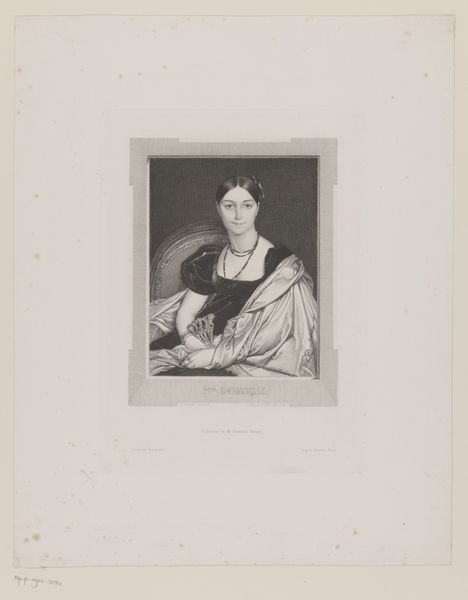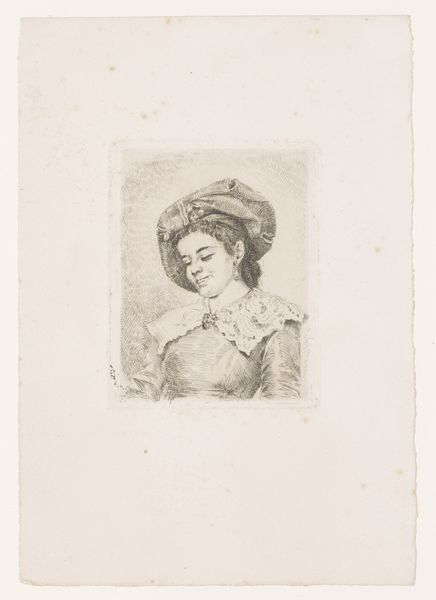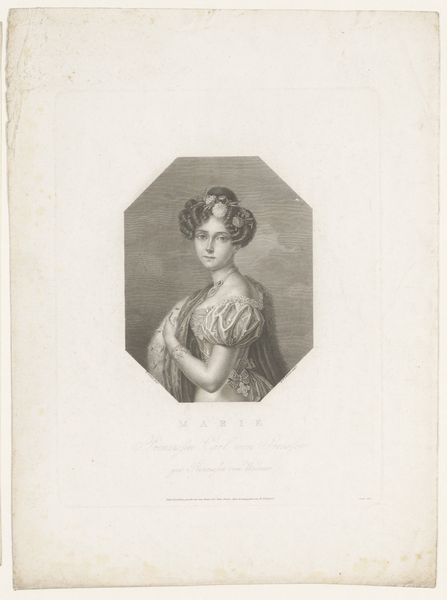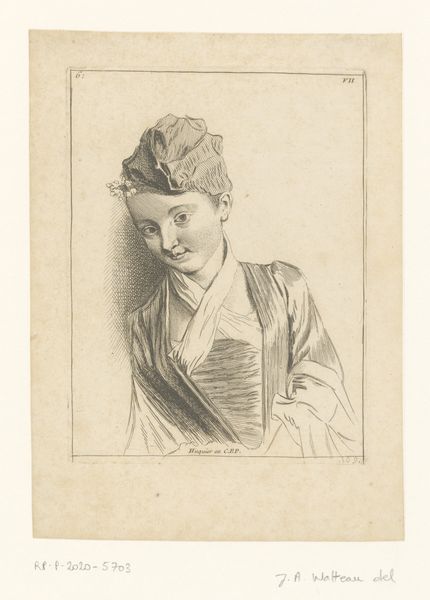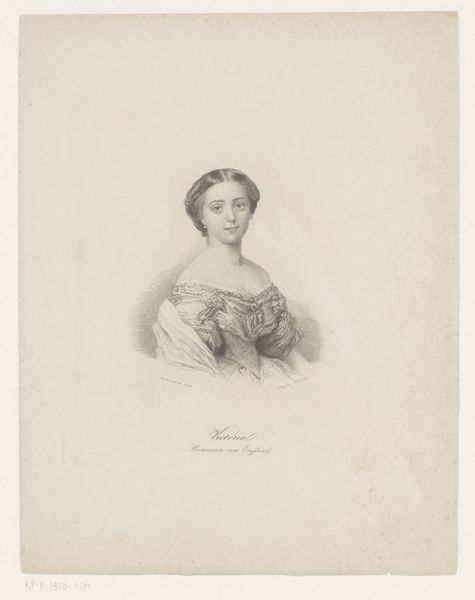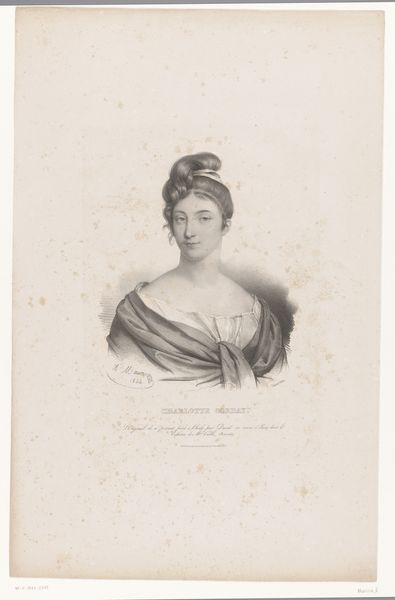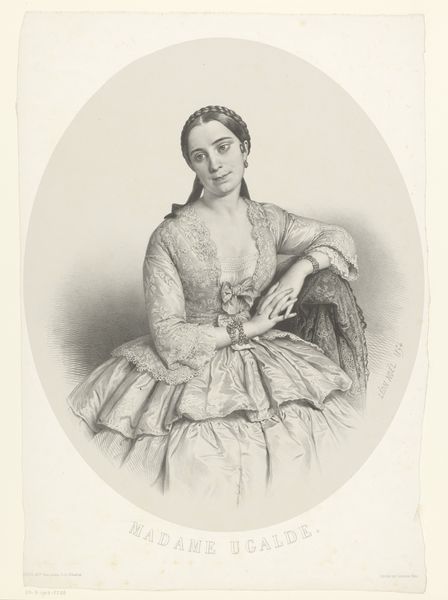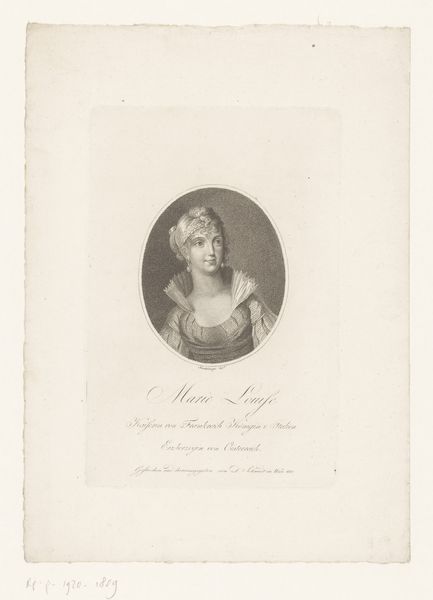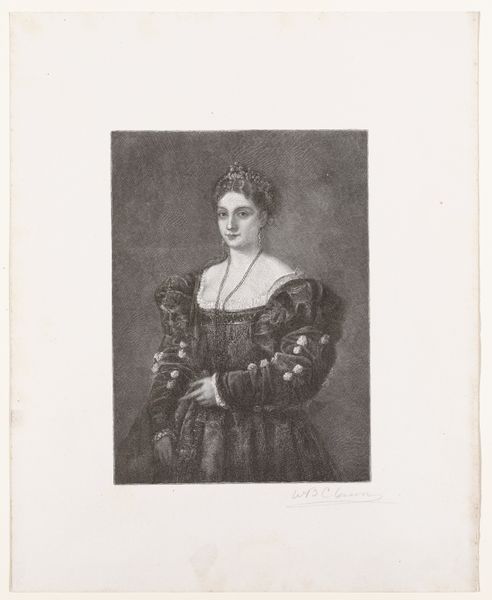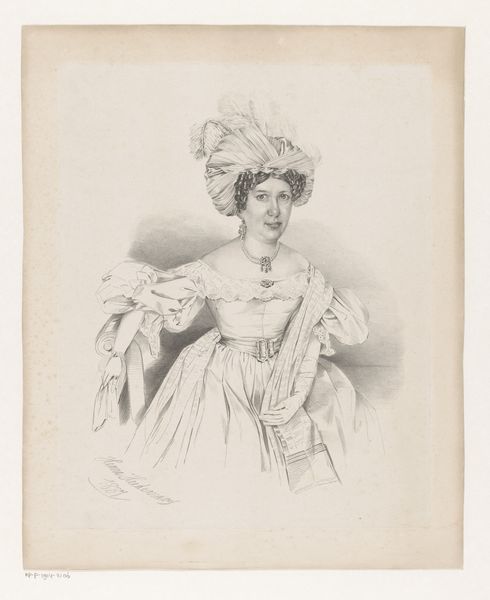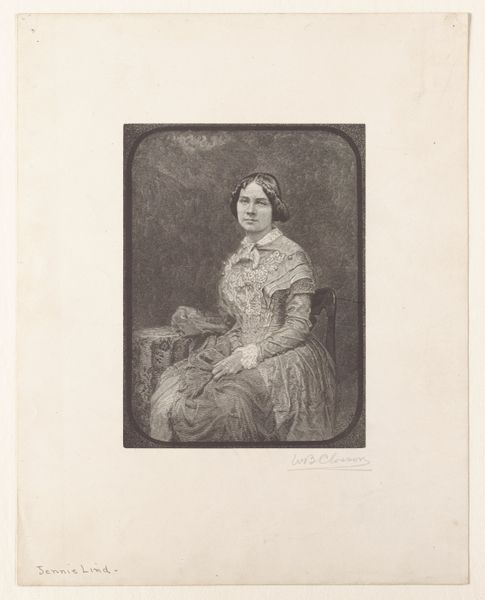
drawing, paper, pencil
#
portrait
#
drawing
#
neoclacissism
#
light pencil work
#
ink paper printed
#
pencil sketch
#
old engraving style
#
paper
#
pencil
#
history-painting
#
realism
Dimensions: height 510 mm, width 370 mm
Copyright: Rijks Museum: Open Domain
Curator: This drawing, made after 1830 by A. Carloni, presents a portrait of the singer Fortunata Marinoni. The artwork employs pencil on paper and evokes the aesthetic of Neoclassicism. Editor: The first thing that strikes me is the intimacy achieved with such delicate pencil work. The way light dances across her features, her calm posture; it suggests a rather serene moment, almost as though caught in mid-thought. Curator: Indeed, the subtle gradations achieved through the pencil are remarkable, contributing to a very well-balanced composition. The portrait’s formal qualities highlight the figure's poise and elegance, very much aligned with Neoclassical ideals. Editor: I'm drawn to the paper itself, too. Look at its texture; you can almost feel the tooth of it beneath the pencil. I wonder what sort of labor went into producing this paper, where it was made, and the social status it conveyed just to use such quality material. The context of consumption becomes intriguing here. Curator: A pertinent point. Considering its artistic lineage within portraiture, however, the emphasis on the sitter’s refined features, her elaborate hairstyle—accentuated by the feather—directs our attention to idealised beauty, echoing canons established within academic artistic practice. Editor: I also note the stark contrast between her rather ornate puffed sleeves and dress and her unadorned hands and her focused gaze, creating an impression of strength but the clothing hints the labor involved to create that impression and the work she likely undertook as an entertainer to afford such dress. The making and its cost are clearly a display. Curator: You make a compelling case for considering the labour invested in material representation, as this helps appreciate further nuances in this artistic creation, where formal execution meets tangible, economic realities of artistic patronage. Editor: It really alters the lens through which we perceive not only art production but its meaning as a reflection of our culture. Curator: Precisely! It helps us better understand both what we're viewing—its immediate visual impact—and what it meant to make and showcase artworks such as this.
Comments
No comments
Be the first to comment and join the conversation on the ultimate creative platform.
